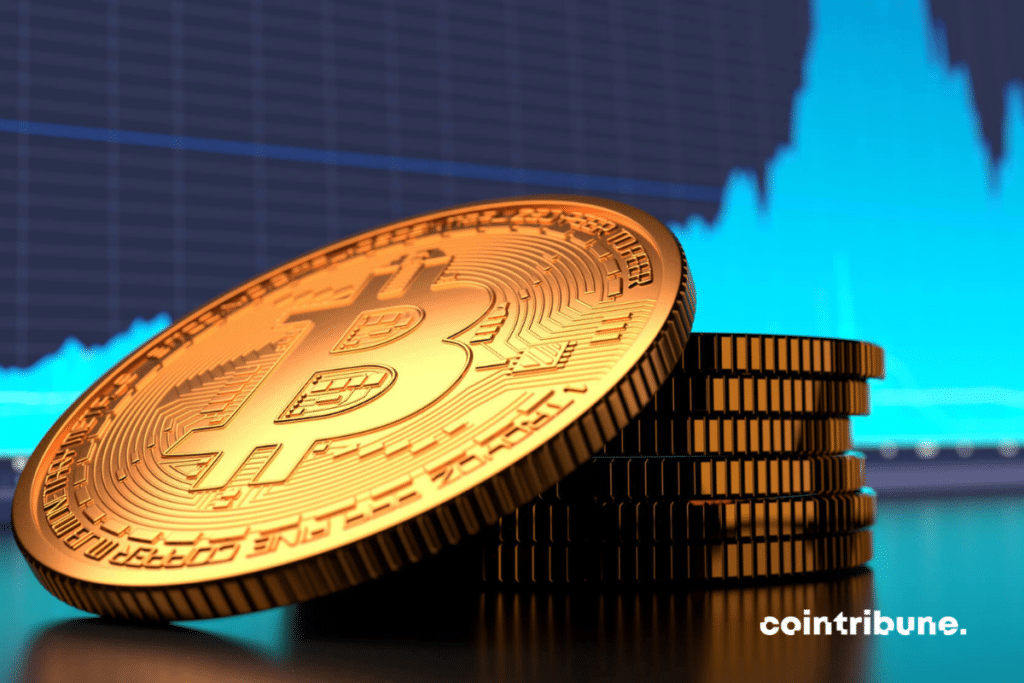Sometimes 20-100 blocks get found in quick succession, “current hashrate” readout on websites will show crazy number like 450Eh/s.
— 🏔Adam O🏔 (@denverbitcoin) May 2, 2023
Always watch 1500-block to 5k-block avg time to get an understanding of true hashrate.
All based on blocktimes there’s no query of “total hashrate.” pic.twitter.com/ijgNsrwzIX
A
A
Why is the hashrate soaring?
Fri 05 May 2023 ▪
4
min read ▪ by
Learn
▪
Mining
The hashrate of Bitcoin broke its record on Tuesday, May 2. How can we explain such a sudden increase?

Is it a rush towards Bitcoin or just a stroke of luck?
The hashrate soared to 491.15 exahash per second (EH/s), compared to 380 EH/s just two days earlier.
This sudden movement cannot be linked to the simultaneous connection of gigantic fleets of miners. It takes much more than 48 hours to connect Antminers representing more than 30% of the hashrate.
Some suggest that miners may have temporarily modified the hash rate frequency of their ASICs. This is known as overclocking and underclocking in the jargon.
Overclocking an Antminer means making it hash faster than the factory settings, and vice versa. This is possible thanks to programs like Braiins OS.
Miners tend to reduce the speed when things are tough (low BTC prices). Slowing down the hash rate frequency increases the efficiency of Antminers.
In other words, miners generate fewer hashes, but these hashes cost less in electricity. This improves margins that are eroded by the fall in Bitcoin and/or the rise in electricity costs.
We know that some miners have recently stopped underclocking. Bitfarm recently announced in a press release:
In Argentina, 2,100 new miners were energized and the underclocking of existing miners was discontinued as scheduled, directly contributing an additional 250 PH/s of total production.
Alright, but we’re talking about a jump from 380 EH/s to 490 EH/s! That’s an increase of about 30% in just two days! This would have required 100% of miners to increase the frequency of their ASICs by 30%. Or, 50% of them would have to increase it by 60%.
All of this is highly unlikely. And besides, it would be noticeable at the level of large mining pools.
To go further…
As of this writing, Foundry USA shows 110 EH/s, or 30% of the hashrate. Next come Antpool with 23%, F2pool (14%), and Binance Pool with 8%. However, none of them show a sudden increase in their hashrate.
In addition, according to the coinwarz website, the next difficulty adjustment (Thursday, May 4) should be downwards. This is the first time since January 3. This means that over two weeks, the hashrate has actually decreased.
In other words, the recent hashrate increase is due to luck. Blocks have simply been found more quickly than usual. This happens. And since some sites are based on a small series of blocks, there is sometimes a temporary overestimation.
It is true that some miners, such as the Russian Bitriver, have been aggressively deploying new ASICs lately. But such a jump can only be related to statistical dispersion.
Maximize your Cointribune experience with our "Read to Earn" program! For every article you read, earn points and access exclusive rewards. Sign up now and start earning benefits.
A
A
The Cointribune editorial team unites its voices to address topics related to cryptocurrencies, investment, the metaverse, and NFTs, while striving to answer your questions as best as possible.
DISCLAIMER
The views, thoughts, and opinions expressed in this article belong solely to the author, and should not be taken as investment advice. Do your own research before taking any investment decisions.